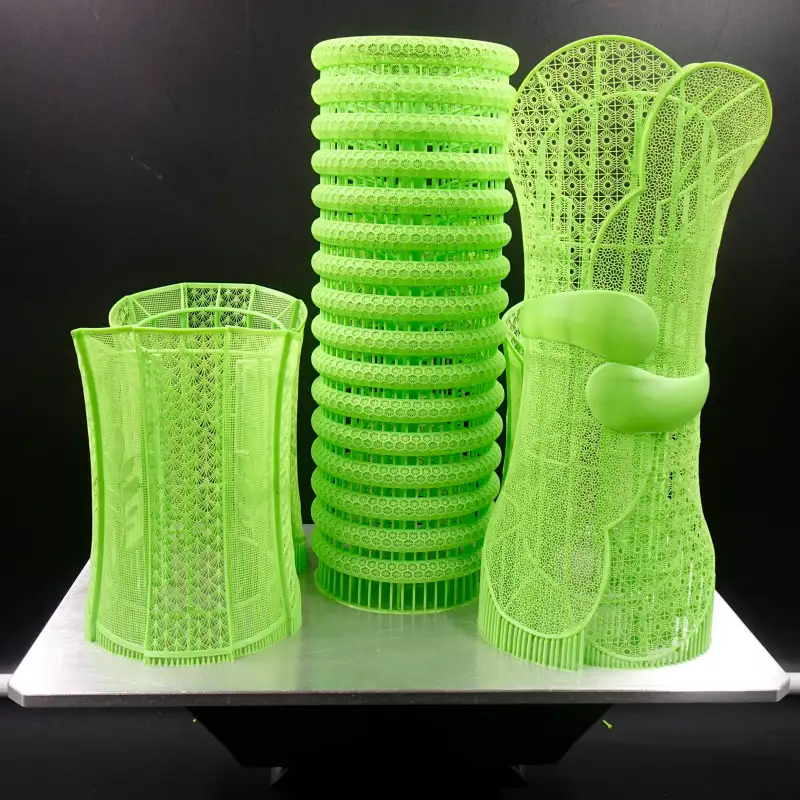LASER CUTTING VS. WATERJET CUTTING FOR JEWELRY: WHICH TECHNOLOGY DELIVERS SUPERIOR DETAIL?
Precision is paramount in the intricate realm of jewelry manufacturing. Jewelers and manufacturers are constantly in pursuit of innovative solutions that will improve the accuracy, efficiency, and functionality of their products as technology continues to evolve.
Waterjet cutting and laser cutting are two cutting methods that are particularly noteworthy in the jewelry industry due to their capacity to produce intricate designs and their precision. However, which technology is capable of producing exquisite jewelry with exceptional detail? We will examine the advantages, disadvantages, and optimal applications of each approach.
COMPREHENDING LASER CUTTING IN THE JEWELRY INDUSTRY
A high-intensity laser beam is used in laser cutting, a non-contact, thermal-based cutting technique, to precisely melt, burn, or evaporate materials. When manufacturing jewelry, this technique is frequently used to cut metals, acrylics, and even fragile metals like titanium, gold, silver, and platinum.
Benefits of Laser Cutting for Jewelry
Incredible Precision & Fine Detailing:
Laser cutting is perfect for extremely complex jewelry designs like lattice and filigree patterns since it can reach tolerances as small as ±0.001 inches.
Minimum Material Waste:
Compared to conventional cutting methods, the ultra-fine laser beam ensures less material waste by minimizing kerf width, or the width of the cut.
Smooth & Polished Edges:
Post-processing is less necessary with laser technology because it doesn't produce burrs or rough edges as mechanical cutting does.
Rapid Production:
Laser cutting is perfect for producing engraved items, monograms, and personalized jewelry in large quantities since it can work at incredibly high speeds.
Material Thickness Versatility:
Laser cutters are most commonly used for thin to medium-thickness metals; however, they can also be used on reflective metals (with fiber lasers) and non-metallic materials such as glass and gemstones.
Constraints of Laser Cutting
- Heat-Affected Zones (HAZ): The structure of heat-sensitive metals can be marginally altered by thermal stress, as laser cutting is dependent on heat.
- Limited Cutting Depth: Lasers are most effective when used on thin and medium-thick materials, rendering them less effective for deep cutting in bulkier metal sheets.
- Not Suitable for Soft Materials: Although laser cutters are effective for metals, they may encounter difficulties with gentler jewelry materials, including pearls, organic stones, and certain composite materials.
COMPREHENDING WATERJET CUTTING IN THE JEWELRY MANUFACTURING INDUSTRY
Waterjet cutting is a cold-cutting process that precisely erodes material by utilizing a high-pressure stream of water coupled with an abrasive (such as garnet). This technique is highly effective for the precise cutting of metals, stones, and even fragile substances without the risk of thermal distortion.
Benefits of Waterjet Cutting for Jewelry
Lack of Heat-Affected Zone (HAZ):
In contrast to laser cutting, waterjet cutting does not produce heat, which prevents material deformation and the modification of metal properties.
Extensive Material Compatibility:
Waterjet cutting is particularly effective for the cutting of hard gemstones, such as opals, sapphires, and diamonds, as well as metals and synthetic materials.
Improved Cutting Capabilities:
Waterjets are well-suited for the production of heavy, structured jewelry pieces due to their ability to cut denser metallic sheets (up to several inches in depth).
High Accuracy with Minimum Waste:
Although it is slightly less precise than laser cutting, waterjet cutting can achieve tolerances of ±0.003 inches, resulting in incredibly detailed products with minimal waste.
Constraints of Waterjet Cutting
- Processing Speed is Reduced: In comparison to laser cutting, waterjet cutting necessitates additional time to execute intricate designs.
- Abrasive Edge Finish: The highly precise process of waterjet cutting may occasionally result in a slightly grainy edge, necessitating post-processing to achieve a refined finish.
- Increased Operating Costs: In comparison to laser systems, waterjet machines necessitate abrasive materials, which can drive up operational expenditures.
WATERJET CUTTING VS. LASER CUTTING: WHICH IS MORE EFFECTIVE FOR JEWELRY PRODUCTION?
Excellent for Filigree and Intricate Designs: Laser Cutting
The higher precision, cleaner cuts, and high-speed operation of laser cutting make it the preferred choice for creating highly complex and delicate patterns like elaborate filigree, lacework, or monograms.
Excellent for Slicing Thick Metal or Hard Gemstones: Waterjet Cutting
Waterjet cutting is more efficient when working with thicker metal sections, as it preserves material integrity without distortion. Furthermore, waterjet technology surpasses lasers in the process of cutting gemstones by preventing thermal damage.
Excellent for Cost Efficiency and Massive Production: Laser Cutting
Compared to waterjet cutting, laser cutting is the preferred method for jewelry manufacturers seeking high production output, as it operates at higher speeds and has reduced operational costs.
Excellent for Heat-Sensitive Work and Mixed Materials: Waterjet Cutting
Waterjet cutting is advantageous for jewelry designs that incorporate multiple materials (e.g., a combination of metal and stone) due to its ability to effectively cut through stratified materials and its lack of heat generation.
FINAL CONCLUSION:
SELECTING THE APPROPRIATE TECHNOLOGY FOR YOUR JEWELRY MANUFACTURING REQUIREMENTS
In the end, the decision between laser cutting and waterjet cutting is contingent upon the unique design, material, and production needs of your jewelry business.
Employ Laser Cutting, If You Need:
- Ultra-precision for delicate metal designs
- Mass manufacturing through high-speed production
- Well-polished edges without extra finishing
- Monograms, engravings, and exquisite filigree work
Employ Waterjet Cutting, If You Need:
- Heat-sensitive cutting (e.g., the cutting of composites, pearls, or gemstones)
- Utilizing metals that are thicker than the laser's capabilities
- Eliminating distortion while cutting through a variety of materials
- The preservation of material integrity through a cold-cutting procedure
Jewelry manufacturers can improve their design capabilities, production efficiency, and overall quality of finished pieces by making informed decisions based on an understanding of the advantages and limitations of each cutting technology.
Does your jewelry firm aspire to incorporate state-of-the-art technology? Maintain a competitive edge by incorporating the appropriate instruments into your jewelry manufacturing process to increase precision, innovation, and creativity.

